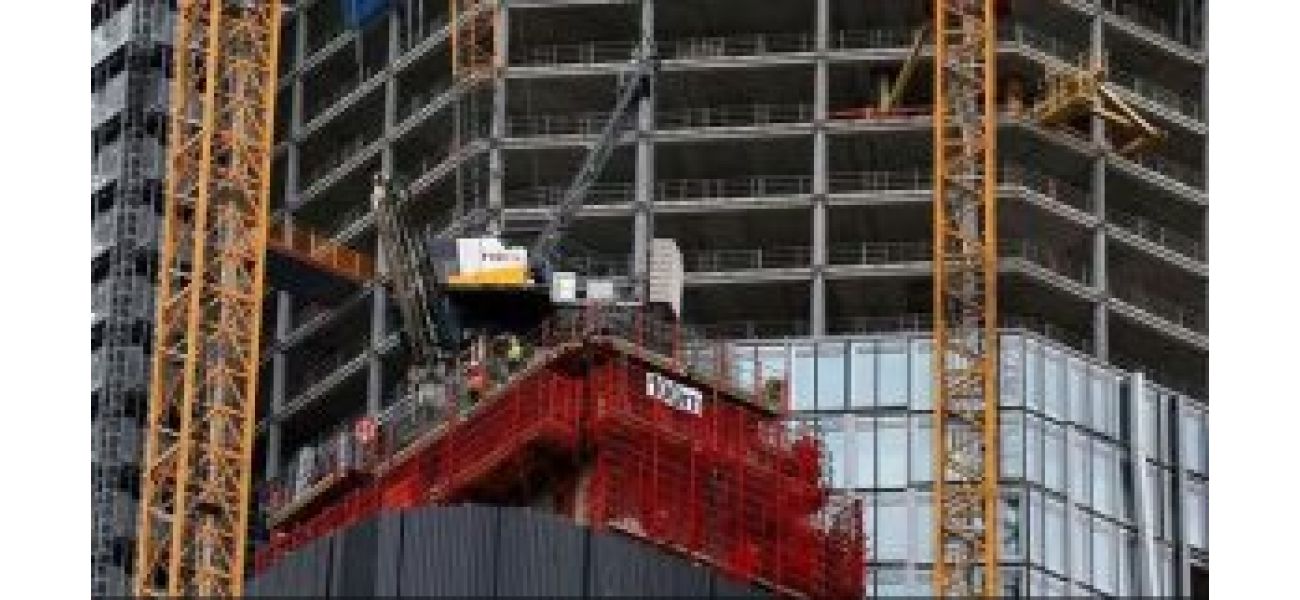Experts praise the IBC for reviving stagnant real estate projects.
Delhi hosts event on new Insolvency and Bankruptcy Code's success in resolving distressed real estate assets.
February 19th 2025.

On the outskirts of the bustling national capital, a significant event took place on Wednesday that shed light on the remarkable impact of the new Insolvency and Bankruptcy Code on the real estate sector. The Post Graduate Insolvency Programme, organized by the Indian Institute of Corporate Affairs, held a conclave at Manesar, where experts discussed the successful resolution of distressed assets in the industry.
The theme of the conclave, "Resolving Insolvencies in Real Estate Projects," was explored through insightful keynote addresses from prominent figures in the field, including Anuj Jain and Pallav Mohapatra. They delved into the evolution of real estate insolvency and the crucial role played by the Insolvency and Bankruptcy Code in facilitating successful resolutions.
During his address, Mohapatra also shed light on the challenges faced by Insolvency Professionals and the specialized skills required for handling insolvency cases in the real estate sector. The panel consisted of professionals from various insolvency entities, law firms, and academicians from all over the country, who shared their valuable insights on the subject.
The PGIP Conclave 2025 proved to be a crucial platform for professionals to exchange knowledge, stay updated with the latest developments in the insolvency domain, and network with industry experts. Against the backdrop of the recent budget announcements for 2025-26, the discussions at the conclave gained even more significance.
The budget's emphasis on housing, economic resilience, and tourism-led growth has given a much-needed boost to the real estate sector. The introduction of the Rs 15,000-crore SWAMIH Fund 2 is expected to revive 1 lakh stalled housing units, restore liquidity, and instill confidence in homebuyers. Moreover, targeted rental housing incentives and self-occupied home tax benefits are predicted to drive demand for homes, especially among urban and middle-income buyers.
In addition to this, the development of 50 top tourist destinations will create a plethora of opportunities in hospitality, retail, and urban infrastructure, thereby establishing tourism as a key economic driver. As per CRISIL's predictions, the bad loan recovery rate for residential real estate projects is expected to reach 16-18% by the end of FY25, owing to rising property prices, improving demand, and increased investor interest in reviving stressed projects. Overall, the discussions at the conclave painted a promising picture for the real estate sector and its future growth prospects.
The theme of the conclave, "Resolving Insolvencies in Real Estate Projects," was explored through insightful keynote addresses from prominent figures in the field, including Anuj Jain and Pallav Mohapatra. They delved into the evolution of real estate insolvency and the crucial role played by the Insolvency and Bankruptcy Code in facilitating successful resolutions.
During his address, Mohapatra also shed light on the challenges faced by Insolvency Professionals and the specialized skills required for handling insolvency cases in the real estate sector. The panel consisted of professionals from various insolvency entities, law firms, and academicians from all over the country, who shared their valuable insights on the subject.
The PGIP Conclave 2025 proved to be a crucial platform for professionals to exchange knowledge, stay updated with the latest developments in the insolvency domain, and network with industry experts. Against the backdrop of the recent budget announcements for 2025-26, the discussions at the conclave gained even more significance.
The budget's emphasis on housing, economic resilience, and tourism-led growth has given a much-needed boost to the real estate sector. The introduction of the Rs 15,000-crore SWAMIH Fund 2 is expected to revive 1 lakh stalled housing units, restore liquidity, and instill confidence in homebuyers. Moreover, targeted rental housing incentives and self-occupied home tax benefits are predicted to drive demand for homes, especially among urban and middle-income buyers.
In addition to this, the development of 50 top tourist destinations will create a plethora of opportunities in hospitality, retail, and urban infrastructure, thereby establishing tourism as a key economic driver. As per CRISIL's predictions, the bad loan recovery rate for residential real estate projects is expected to reach 16-18% by the end of FY25, owing to rising property prices, improving demand, and increased investor interest in reviving stressed projects. Overall, the discussions at the conclave painted a promising picture for the real estate sector and its future growth prospects.
[This article has been trending online recently and has been generated with AI. Your feed is customized.]
[Generative AI is experimental.]
0
0
Submit Comment





